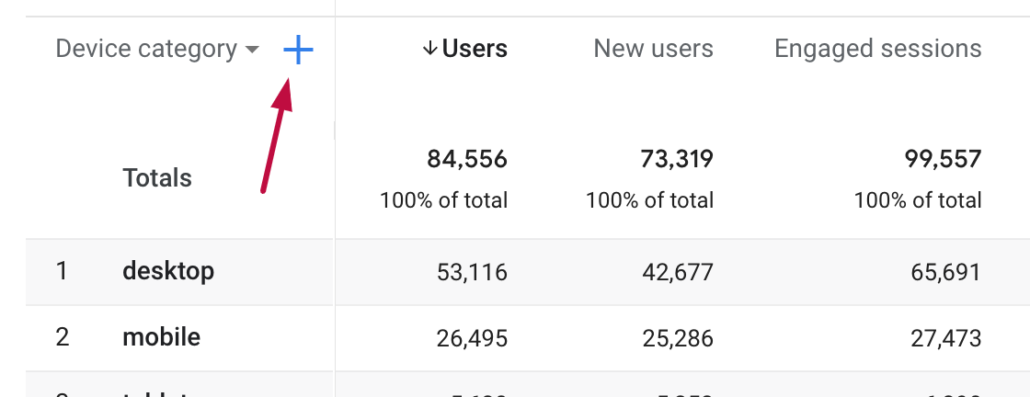Secondary Dimension in Google Analytics: Ideal Practices and Tips
Secondary Dimension in Google Analytics: Ideal Practices and Tips
Blog Article
Make The Most Of Reporting Accuracy With Secondary Measurement in Google Analytics
Recognizing just how to optimize reporting accuracy with second measurements in Google Analytics can significantly enhance the deepness of understandings stemmed from information analysis. By integrating additional measurements strategically, marketers can discover hidden patterns and connections that may not be instantly obvious when analyzing main metrics alone. This nuanced strategy enables a much more thorough understanding of user habits and project performance, paving the method for even more targeted and efficient decision-making. The usage of additional measurements holds the vital to unlocking a wealth of important info that can change the effectiveness of digital advertising and marketing methods.
Recognizing Secondary Dimensions in Google Analytics
Secondary dimensions permit individuals to segment and additionally dissect information beyond the primary measurement chosen. While the primary measurement may show the total number of page views, including an additional measurement such as 'source/medium' can offer insights right into where the website traffic originated from.
Moreover, understanding second dimensions is vital for producing much more personalized reports tailored to specific organization goals. By selecting the best mix of primary and second dimensions, experts can discover patterns, trends, and relationships that might or else stay hidden. This nuanced strategy to data analysis encourages services to make educated decisions based upon a detailed understanding of user actions across numerous dimensions.

Exactly How to Use Additional Measurements
When leveraging additional measurements in Google Analytics, the useful application entails choosing specific data criteria to further refine understandings past the key measurement's scope. To apply additional dimensions successfully, start by accessing the record or dataset where you wish to dig much deeper right into the information. Remember that additional measurements help provide context and granularity to your primary dimension information, allowing you to draw out more actionable and significant understandings from your Google Analytics records.
Leveraging Additional Measurements for Insights
Using second measurements in Google Analytics enables a more detailed analysis of data, offering useful insights past the primary measurement's scope. By leveraging additional dimensions, individuals can delve much deeper into the efficiency metrics of their web site or app, uncovering hidden patterns and trends that might not be instantly apparent when just taking a look at primary measurements.
One key advantage of using additional measurements is the capacity to segment and filter data much more exactly. This can aid marketing experts and analysts much better recognize the actions of particular customer sectors, such as new visitors versus returning site visitors, or website traffic coming from different geographical locations.
In addition, secondary measurements allow customers to contrast and contrast different information points site here within the exact same record, offering an extra holistic view of performance (Secondary Dimension in Google Analytics). As an example, matching the primary measurement of touchdown pages with additional measurements like tools or demographics can expose which web pages are most reliable in engaging individuals on various tools or from various demographic groups.
In essence, leveraging second dimensions in Google Analytics equips individuals to remove richer understandings from their information, leading to more informed decision-making and ultimately, enhanced efficiency.
Best Practices for Secondary Dimensions
When examining data in Google Analytics, integrating additional measurements effectively improves the deepness of insights acquired from the main metrics. Choosing pertinent additional Full Report dimensions assists in providing context and a more clear understanding of the data being examined.
Furthermore, it is advised to limit the variety of secondary measurements used in a solitary report to prevent overwhelming the evaluation with excessive information. Focusing on a few crucial secondary measurements at once can result in even more workable and concentrated insights. Additionally, take into consideration exploring with different mixes of key and additional measurements to uncover one-of-a-kind patterns and patterns that may not be obvious when taking a look at the information in isolation.
Advanced Analysis Methods With Secondary Measurements
Discovering complex data connections via the tactical application of additional measurements can introduce nuanced understandings that boost the deepness of evaluation in Google Analytics. By incorporating additional dimensions with main data sets, innovative evaluation strategies can be utilized to draw out important info. One such method is cohort evaluation, where second measurements enable the division of individuals right into teams sharing usual features. This approach enables a deeper understanding of user actions patterns gradually, aiding in the identification of fads and the analysis of advertising and marketing projects' helpful resources performance.
Additionally, second dimensions can enhance the evaluation of conversion paths by offering extra context. Comprehending the different touchpoints a user interacts with prior to transforming can be vital in enhancing the client journey - Secondary Dimension in Google Analytics. By using additional measurements to explore specifics such as web traffic resources or tools used, marketing professionals can customize strategies to target high-converting channels efficiently
Conclusion

To improve information evaluation and gain much deeper insights into customer habits, understanding additional dimensions in Google Analytics is critical - Secondary Dimension in Google Analytics. Additional dimensions enable customers to section and additionally study data beyond the main measurement picked. While the key dimension may display the overall number of web page sights, including a second dimension such as 'source/medium' can supply understandings right into where the traffic originated from.When leveraging secondary dimensions in Google Analytics, the functional application entails picking specific data parameters to further refine insights beyond the main dimension's range. Keep in mind that second measurements aid provide context and granularity to your main measurement information, allowing you to extract more purposeful and actionable understandings from your Google Analytics records
Report this page